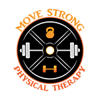Unorthodox Core Strengthening Exercises
Every exercise you do in the gym can be considered “core strengthening.” Whether it be deadlifts, dumbbell bench press, etc., all movements can be considered “core stability” or “core strengthening” drills.
Think of it, when you are performing a movement with your upper or lower body, you are attempting to or you are maintaining a neutral spine while moving your arms or legs.
In today’s post, we are going to discuss a bunch of “unorthodox” core strengthening exercises that you wouldn’t think would be considered that at all.
Upper Body
1-Arm Row
Whether you are doing 1-arm rowing variations on a bench or in standing with a cable machine, the idea is to use you arm to move the weight, but also to maintain a solid core position. By providing a solid core position, this will allow better force transmission to your arm.
The same can be said for a 1-arm Elevated or Non-Elevated Push-Up.
1-arm Push-Up
With the 1-arm row variation, either the weighted implement or gravity is attempting to rotate you or extend/flex you through your spine. With the 1-arm push-up, gravity is attempting to extend and rotate you and YOU have to resist that for optimal performance of that movement.
Anytime where you are incorporating 1-arm or 1-leg for a movement, that can be considered a core drill as well because when you place the weighted implement on one side of your body, it offsets you and forces you to have to control your body better as compared to 2 weights, 1 on each side.
1-arm Dumbbell Bench
The 1-arm dumbbell bench is another example. As you lower the weight towards you, the dumbbell or kettlebell is attempting to rotate you and your body towards that side. As you press the weight away from you, you have to resist over-rotating to the opposite side.
Standing 1-arm KB Bottoms Up Press
This movement can be applied for any type of 1-arm overhead press, whether it be bottoms up or down kettlebell or dumbbell. When you press the weight overhead, you have to resist your body from bending to the opposite side as well as resist bending to the same side when bringing the weight back down.
Suitcase Carries
Since the weighted implement is on one side of your body, you have to resist side-bending to the side the weight is on as well as resist over side-bending away from the weighted side. Resisting of trunk rotation and trunk flexion/extension as well when you walk.
Racked Carries
Similar to the suitcase carry, but more challenging since it is further away from your Center of Gravity (COG). The racked carry works shoulder stability as well as core stability. You will be resisting similar movements as mentioned with the suitcase carry.
Bottoms Up Kettlebell Carries
Similar to the previous 2 movements, but will also work shoulder stability, rotator cuff, and scapulothoracic musculature.
Lower Body
With lower body movements, holding a weighted implement on one side of your body will also make any lower body exercise a core exercise as well.
Movements such as:
Single-Leg Deadlifts
In this movement, you are resisting lumbo-pelvic rotation during the movement as well as flexion and extension of the spine throughout various points in the movement. If you feel single leg deadlifts in your low back, make sure your hips are square and facing straight ahead.
Far too often, if the hips rotate, this can place increased strain on the low back.
Offset Rear Foot Elevated Split Squat
With this movement, it is mostly strengthening the forward leg with some contribution from the rear leg. With the weight being held in the opposite hand, it is increasing stance leg muscular activity as well as forcing the athlete to have to stabilize the spine due to the weight being offset.
Landmine Single Leg Deadlift
Not as challenging as traditional single-leg deadlifts, this movement will still force the athlete to have to maintain a neutral spine to optimize function for the stance leg.
Anterior Step-Ups
Even though the weight can be held at the chest or one in each hand, anytime you use one leg in a movement such as this, your core musculature has to stabilize your entire pelvis when going up onto the step. If the weight is too heavy and/or performed incorrectly, the athlete will have a tendency to tilt their body towards or away from the weight when performing.
Deadlifts
Not typically thought of as a “core stability/strengthening” exercise, the deadlift forces the athlete to have to maintain a solid core position for reducing the risk for injury as well as optimizing force transmission throughout the entire body. With the weight being held in both hands, the athlete has to resist flexion and extension of the lumbar spine.
Squats
Similar to the discussion regarding the deadlifts, the athlete has to maintain a solid neutral spine position and resist flexion and extension at the lumbar spine.
Skater Squats
Whether it be skater squats off a box or to the ground or skater squats with or without weight, the athlete has to resist the pelvis from dropping down to the ground towards the non-stance leg side.
By maintaining a level pelvic position throughout the movement, this also can be considered a core exercise as it is forcing the athlete to have to avoid side-bending through the hips/pelvis in the frontal plane.
Even though you may not be doing a specific movement that is labeled “core”, basically every single movement you do in the gym can be considered core strengthening due to the need to maintain good technique at the lumbopelvic complex as well as provide a base for good force transmission for the body.
Move Strong is a physical therapist located in Hudson, MA, serving Central Massachusetts, Boston, Worcester, and New Hampshire.
Tags:

July 31, 2019


